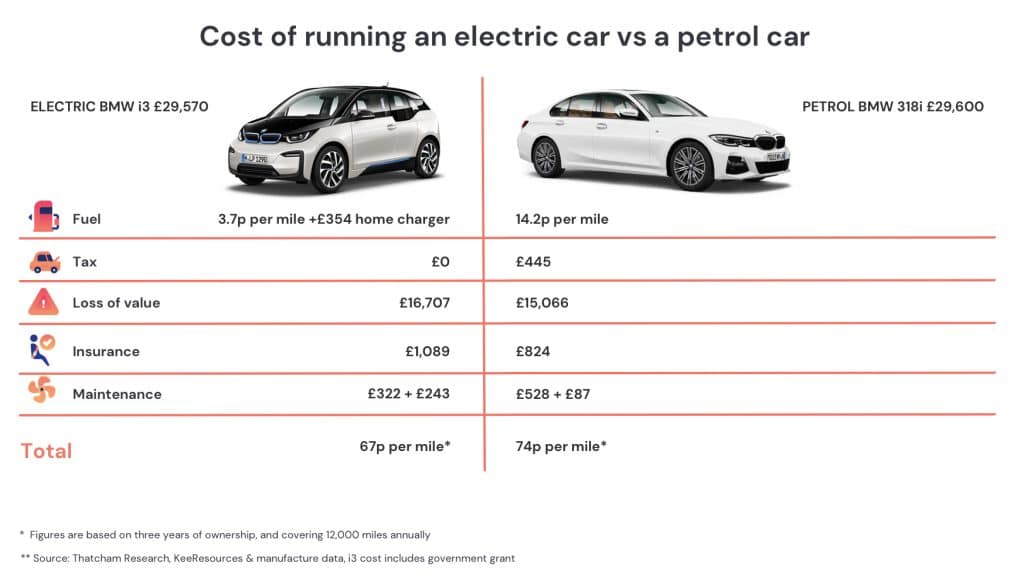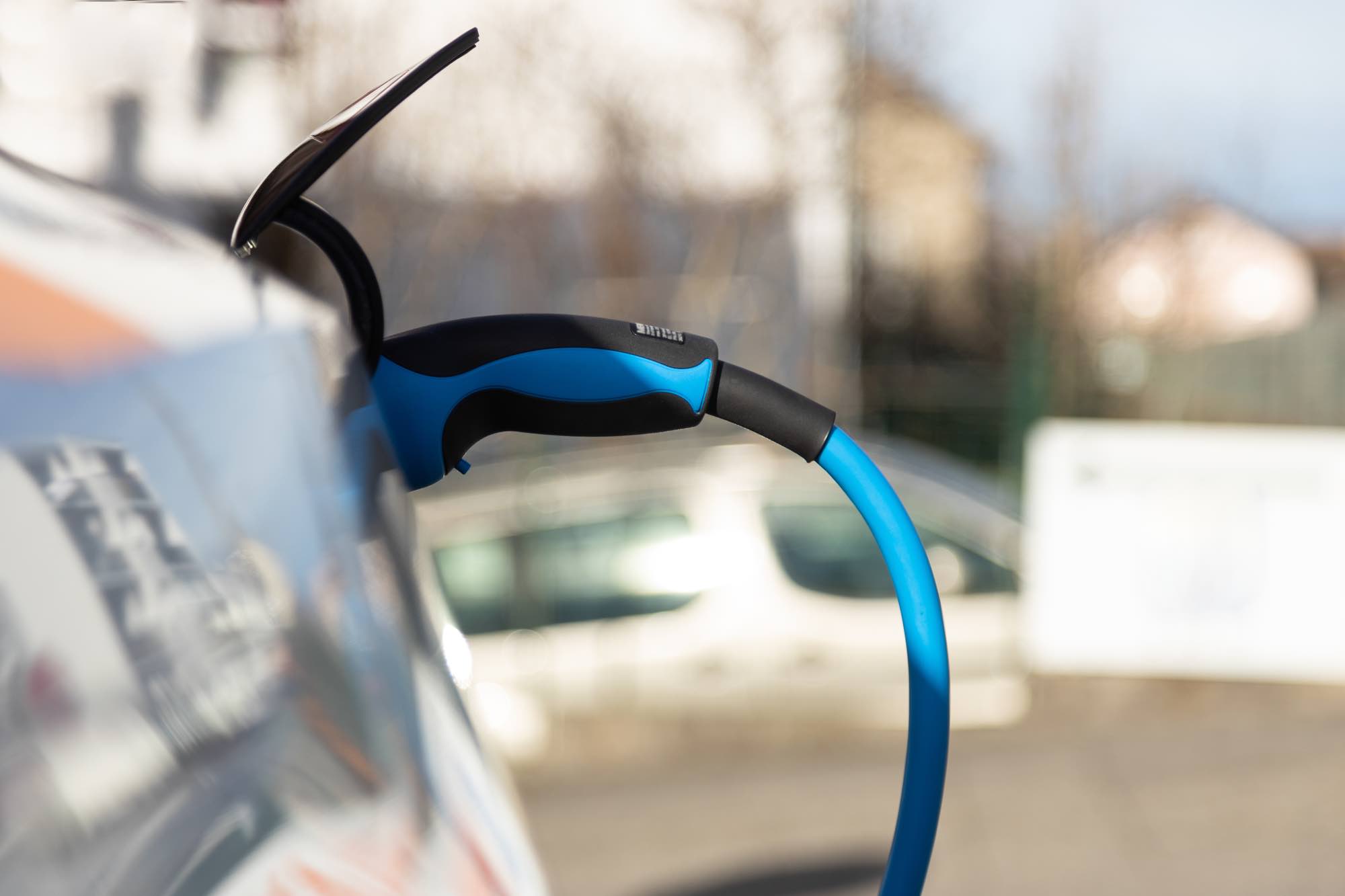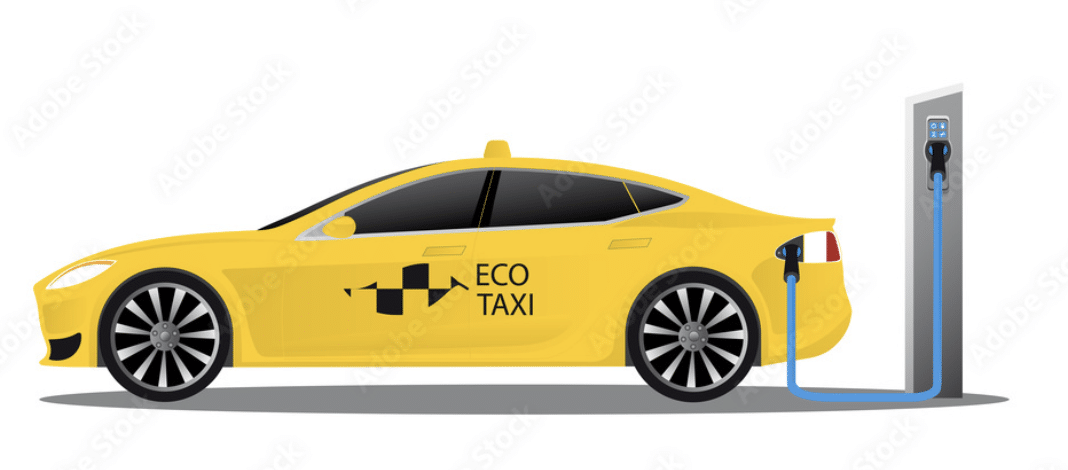The heat is on in the motoring industry. With growing pressures from global governments and an increased push to produce vehicles that cause less adversity to the environment, there’s never been a more exciting period of change in the automotive industry.
From the rise of the autonomous car to the unrivalled popularity of the electric vehicle (EV), time’s are undoubtedly changing.
But as the industry shifts its focus, is there some merit to the classic combustion engine still? In the face of fuel and driver-related shortages and a more significant demand for EVs, let’s take a moment and find out what the real costs of running an electric car vs petrol and diesel really means:
Do EVs cost more to run than petrol and diesel cars?
At first glance, it’s easy to think that EVs cost less to run than your typical petrol and diesel car. But here’s the rub, electric cars brought one or two years after manufacture are more expensive to run than their combustion-engined equivalents.
According to Ian Plummer, commercial director of the UK’s largest new and used car marketplace, Auto Trader, EVs bought used but under one year old “work out £7,000 dearer than petrol or diesel equivalents over three years and 30,000 miles, when the total cost of ownership (TCO) is considered.”
Wondering what TCO means? Well, it’s all your monthly expenditures that typically come with running a car. So that includes insurance, tax, servicing, fuel or the units of electricity required for your EV, as well as any other running costs you may pick up along the way.

Comparatively, EVs that are one to two years old can clock up to £6,000 more expense than owning an internal combustion engine vehicle. In contrast, older EV models of two years+ will leave you up to £4,000 out of pocket. As the age gap widens, the running costs do peter out and will eventually save you money in the long run.
The big 3
So there it is, “nearly new” EVs tip the running costs scales due to three main things:
- Not entitled to the £2,500 government Plug-in grant
- Monthly finance deals tend to have higher APR attached as, unlike new EVs, they won’t be supported by the brand and their finance broker
- No longer entitled to the original manufacturer incentives such as a deposit contribution
Most customers will take the retail price at face value as the big overriding expense. Taking a step back and looking at the bigger picture to see the total cost of car ownership will give you a more comprehensive view.
According to Plummer, the “total cost of ownership of one or two-year-old vehicles is still around 30% higher than their petrol or diesel.” Despite this, the demand for EVs is not slowing down.
The sales of used electric cars are flooding the market, tripling over the past 12 months. But zoom in on the pricing, and used EV prices are still considerably higher than petrol or diesel cars.
While the demand for used EV sales may be soaring, the research shows that the over-supply will become a genuine concern. And may ultimately hamper the government plans to turn the tide in motoring habits.
What’s more, a flooding market will ultimately make it harder for suppliers to shift their used EV stock. With their profits dwindling, it’s no surprise if these companies refused to stock used EVs entirely.
Savings for businesses
While there are some factors to bear in mind if you are buying a nearly new EV, there are some undeniable savings to be made for business use. Overall, the cost of charging an EV is far lower than the price of fuel. So the cost per mile works out in favour of electric over an internal combustion engine (ICE) vehicle.
Even compared to hybrids, EVs tend to come out on top. Hybrids have a limited range and often travel above their all-electric capabilities on a daily basis. That means businesses that use an operational fleet can cut their overall fuel costs by approximately 80% by switching to battery electric vehicles (BEVs).
EVs also typically boast lower maintenance costs compared to a combustion engine as they have fewer moving parts. In short, significant savings can be made compared to petrol, diesel and plug-in hybrid vehicles. Company car drivers also won’t get stung with the Benefit-in-Kind (BIK) tax.
The spanner in the works
With the imminent 2030 ban of new petrol and diesel sales quickly approaching, consumers are weighing up their options more than ever before.
On one hand, there’s nothing to stop you from driving around in your current combustion engine vehicle. While you’ll face additional taxes such as London’s Ultra Low Emission Zone (ULEZ) and Clean Air Zone (CAZ) levys as your car won’t pass the strict emissions rules, you are entitled to carry on as you are.
The flipside of that is the overall costs to the environment. And the potential for fuel caps to be put in place due to shortages – as we have recently witnessed.
Then there’s the overarching demand for used premium models such as BMW and Jaguar, which have seen a 300% increase in EV adverts between February 2020 to February 2021 according to Auto Trader.
While brands such as Nissan and Renault have seen a 144% surge in demand. Monthly payments will increase as a result, and the EV market could ultimately “be stifled before it’s even begun to make traction”, says Plummer.
So despite the UK government’s attempts to subsidise costs, it simply isn’t enough to cover the larger costs that the everyman has to face on their own. More consumers would feel confident in purchasing an EV if they were offered long term support, rather than a mere initial cash payment.
Lets discuss infrastructure
One of the biggest staplers for the electric car market is the lack of infrastructure in place to support the growing demand. Two out of three people claiming that the lack of charge points is the main reason for them not to purchase an EV. It’s no surprise that petrol and diesel still stand tested and true for most drivers.
But when we zoom in on the nation’s capital, London’s electric vehicle infrastructure is a global leader. With 5,000 charge points available at the start of 2020 throughout the city. That’s one for every six EVs, and 25% of all points in the UK.
What’s apparent is the UK’s need to prioritise charging infrastructure throughout the whole country. Londoners may have ample opportunities to charge their EVs with rapid charge points throughout the city. Standard charge points can take 7-8 hours for a full charge – most of these, from EV owners, own homes. Most people can’t afford the time to queue after all.
With 2030 fast approaching, more needs to be done to encourage drivers to switch from their reliable petrol and diesel. And it starts with improved infrastructure. While you might not mind charging your car as you shop in the supermarket, or overnight, what happens when you don’t have the means to fuel your car?
The ultimate cost
Plainly speaking, fossil fuels are running out, and the demand for fuel still remains high despite this. But the long-term consequences of our fuel consumption is the impact on the environment and the planet as a whole. With the UN issuing a “red alert” after the initial NDC Synthetic report in February 2021, its no surprise that you are being urged to switch to an EV.
Yes, EVs offer a different driving experience to your classic combustion engine vehicle. Yes, they are limited by range, the potential for charging and hidden running costs to boot. But there are some undeniable positives, such as:
- Initial £2,500 plug-in grant – we know this has its limitations too, but the incentive is there nevertheless!
- Lower maintenance
- Cheaper fuel – electricity vs petrol or diesel
- Zero emissions status – no extra fees to drive through the country’s towns and cities
- Remarkable safety features
- Top notch on-board technology
- Broad range of options when buying new through car finance – find out how to apply here
Making the leap to an EV may seem like a gamble. But when you look at the mounting evidence, there are here to stay. Yes, there is still work to be done. Especially in terms of accessibility for low-income drivers, rapid charging point infrastructure and better at-home charging facilities to boot. But the 2030 deadline isn’t going anywhere.
Electric car sales are soaring. While petrol and diesel vehicles still remain popular, recent events such as fuel shortages and the upcoming 2030 ban show that EVs are here to stay.
Despite the ebb and flow of the used EV market, and the surprising running costs attached with “nearly new” models, its worth considering all of your options.
- New Initiative Gives The ‘Knowledge’ For Free. - January 23, 2024
- Is the clock ticking on the Plug-in Taxi Grant (PiTG)? - January 5, 2024
- Taxi drivers to get clean air cash for new cars. - December 5, 2023





